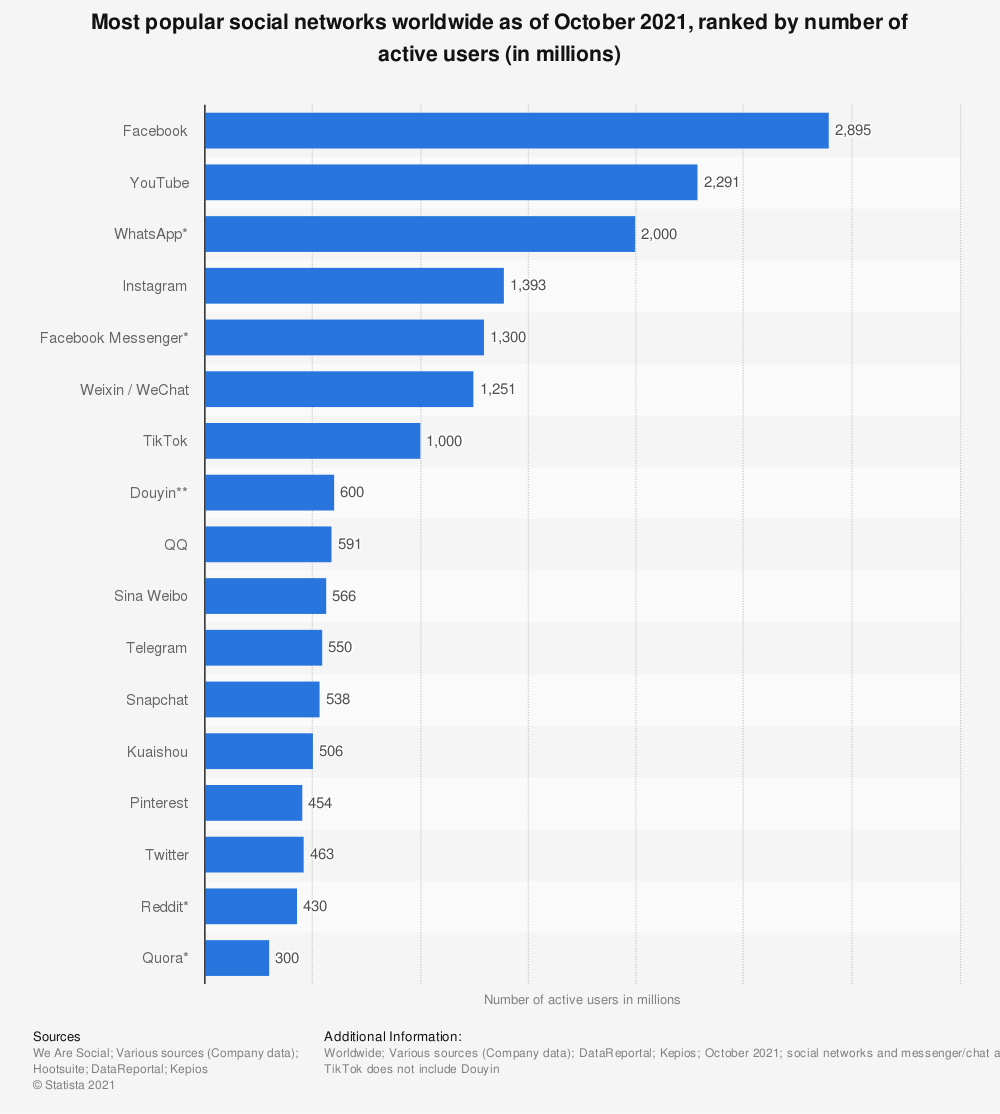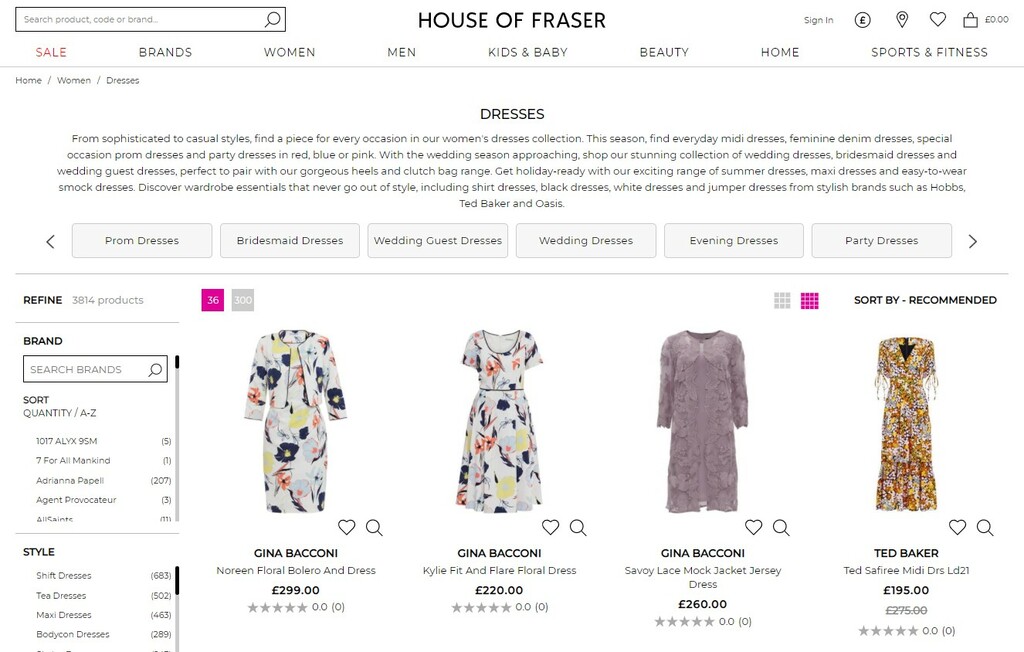Ecommerce has exploded in the past two years. Shoppers have surpassed 6.5 trillion USD in sales, over 2 billion people made a purchase online. Data suggests that by 2024, ecommerce will have 21.8% of global retail sales.
Simply opening up your online shop and waiting for the sales to come in is a terrible strategy, and likely to lead to very few. Today we want to share with you how to create an ecommerce marketing strategy that actually converts.
What is ecommerce marketing?
Ecommerce marketing is any marketing used to promote an online store to generate sales.
This includes any activities being used to raise brand awareness, drive traffic, convert website visitors, and increase sales.
What are the types of ecommerce marketing?
Ecommerce marketing can come in many forms and can (and should) be used across platforms. 73% of retail consumers use multiple channels to shop, so existing on one platform as an ecommerce brand might be a huge mistake.
Below are nine different types of marketing that can be used in ecommerce.
1. Content marketing
Content marketing is any marketing that focuses on creating and sharing a piece of content for your target audience.
Ecommerce is no different from other industries and can benefit greatly from it. This piece of content is meant to help website visitors with their customer journey.
Some examples might be, the written text on a category page, the sales copy on a product page, a customer testimonial posted on TikTok, etc.
Content marketing strategy is about creating something to educate, engage, or inspire your audience. It isn’t restricted by platform or content and can include tutorials, FAQs, and more.
Because content marketing is a broad form of marketing, some of the items listed below fit under this umbrella (ie: social media marketing, email marketing, Pinterest, etc).
2. Search engine optimization
Search Engine Optimization (SEO), is a process of optimizing your website to increase quantity and quality of visitors via organic search results. Did you know that over 80% of shoppers do online research before their purchase? Most of which is done via search engines.
Ecommerce stores can benefit from getting their content and products in search results, especially if they can reach the first page.
These businesses can also benefit from SEO when combined with content marketing (as mentioned above), and can ultimately land product placements in large publications.
While SEO principles are similar across websites, there are nuances when it comes to technical optimizations. Ecommerce sites can be incredibly large with 1000s of products and millions of pages.
3. Influencer marketing
Influencer marketing has become quite sophisticated and is the perfect strategy for ecommerce. One of the most effective forms of marketing is word-of-mouth, and influencer marketing is the next best thing.
Working with influencers in your niche can help market your products to a new audience. In fact, 90% of survey respondents think influencer marketing is an effective form of marketing.
Use BuzzSumo to find influencers in your niche to reach out to create content around your products. Don’t be afraid to choose a few influencers to work with across different platforms. This can help maximize your overall reach.
4. Social media marketing
Statista estimates that there are 4.2 billion users on social media worldwide – 4.15 billion of those are active. The chart below shows social media networks by number of active users.
Any of these platforms, from Twitter to Facebook and TikTok to Instagram, can present a social media marketing opportunity for your ecommerce brand. While there is a wide range of choices, the format of your content will depend on the platform.
For example, Instagram is all about video right now. This means that vertical videos uploaded to stories, Reels, or IGTV will perform better than a photo. It also means that you can’t take your posts from Instagram, copy them across all platforms, and call it a day.
Each platform has its own purpose and culture around its use. Businesses should be careful not to come across spammy with endless promotions. Social media marketing is an opportunity to connect with your audience personally and in real-time.
5. Paid advertising
According to Hubspot, 68% of marketers think that paid advertising is "very important" or "extremely important" to their overall marketing strategy. Respondents also reported that the paid channels with the highest ROI are Facebook and Google advertising.
Paid advertising can be a text-based ad in Google search results, a product carousel on Facebook, or even a vertical video in Instagram stories (among many others!).
Retargeting customers with ads is another strategy that can be done with paid advertising.
Find out 7 paid advertising strategies to promote your ecommerce brand.
5. Email marketing
Email marketing and ecommerce go hand in hand. Emails are a great strategy to grow brand awareness, connect directly with your audience, and engage potential customers. Strategies include:
- A monthly newsletter around your niche or products
- Wishlist reminders
- Drip sequences / automations
- Transactional emails
- Segmented emails
… and more.
The average cart abandonment rate is nearly 70% worldwide, while the average open rate for an abandoned cart email is 41.18% – meaning email gives you an awesome opportunity to prevent nearly half of all your lost sales!
And, to top even that, segmented email campaigns can lead to a 760% increase in email revenue.
Nice 😎
6. Affiliate marketing
Affiliate marketing is an emerging strategy that accounts for more than 16% of all ecommerce orders in North America. It involves a third-party recommending your product and then receiving financial compensation when a purchase is made.
This can work through influencer marketing where the influencer uses a code or affiliate link to direct their viewers. This link or code can track purchases made that were introduced by the influencers and give them a percentage of the sale.
Affiliate programs can be structured in different ways to suit your business, but overall it’s a low-risk way to tap into new audiences.
Members of your affiliate program will boast about your products through blog posts, videos, photos – basically any form of content they choose!
7. Live chat
Live chat is the most preferred way for customers to interact with a business. It improves conversion rates by almost 4% and costs less for companies than phone support.
Live chat is also an excellent way to engage with website visitors to grow brand awareness, answer sales queries, and provide post-sales support. There are endless options to implement live chat on your website, which can be human or bot-led.
8. Pinterest marketing
Many may argue Pinterest is a social media platform, but that isn’t strictly true. They refer to themselves as a visual search engine, which is supported by basic SEO practices such as keywords, relevancy, quality, and freshness.
Today, Pinterest is a massive network with around 444 million monthly active users. Ecommerce businesses can sell directly to customers through their platform as well as create organic posts, Idea Pins, and even paid advertising.
Before you say that your business is not Pinterest relevant.
Everything is Pinterest relevant. 👍
What are the benefits of an ecommerce marketing strategy?
Organic traffic
Organic traffic is one of the top benefits of a marketing strategy, as opposed to paid traffic which stops when your advertisements do. Creating relevant content supported by keywords can help bring in consistent traffic to your ecommerce.
Achieved through: SEO and content marketing
Social shares
Social shares act as testimonials or reviews and signal that your content is worthy of engagement. You can calculate your engagement rate by taking the total number of interactions / total number of followers x 100%.
The more you create content your audience wants to share, the more likely you are to be on their mind when they come to make a purchase.
To analyze your most engaging content, just head to BuzzSumo’s Content Analyzer and type in your website domain. From there you can learn from your top content, and repeat success strategies.
Check out our guide on repurposing content to make it once and transform it over and over again!
Achieved through: social media marketing, content marketing, influencer marketing, Pinterest
Brand awareness
While this might not feel tangible at the beginning, brand awareness is an incredible benefit to your business. Awareness campaigns can gently introduce your brand to potential customers without feeling invasive.
This can be done on any platform with any content type. Consider what your company stands for, your vision, and benefits you offer to customers. Through repeated soft reminders, your brand can become a household name.
Achieved through: any
Reaching all parts of the funnel
Content can assist your customer at every point of their journey.
It can begin on Pinterest when someone lands on your website after clicking a pin created about summer fashion trends.
Once the visitor reaches your website, a live chat can assist with any questions they might have.
And, maybe they added a few items to their cart and never checked out.
An abandoned cart email can help finalize the sale.
Achieved through: combination
Backlinks
A simple website leaves little to share, but a website with content presents opportunity. If you create relevant and engaging content, you’ll be rewarded with backlinks.
These can also be attained through digital PR efforts and building relationships with publications, journalists, and influencers.
Achieved through: content marketing, digital PR
Top 9 tips to create a successful ecommerce marketing strategy
1. Understand the value you bring to customers
This should be the very first step you take when starting your business. You want to understand the product you are offering, the value and benefits of said product, and how it addresses the needs or desires of your target customers.
If you are not able to articulate this in a few sentences, then you aren’t ready to create content. This is an important step for building and growing a brand.
2. Take stock of your capacity
Do you have a small team? Create an ecommerce marketing strategy that capitalizes on your strengths without work overload. It can be as simple as creating a couple social media posts a week or one blog article a month.
Hate being in front of the camera? Or don’t feel like a strong writer? This is an opportunity to get creative. If your team can’t handle additional work, look into hiring a freelance content creator or marketing agency that can help.
3. Use UGC to answer the right questions
Find product questions being asked on websites like Amazon to inspire your next piece of content. The Question Analyzer in BuzzSumo is a great place to find relevant questions that can be used to create both top and bottom of the funnel content.
4. Set up product alerts for your competition
BuzzSumo allows you to set up alerts to monitor your brand mentions. But did you know that it also allows you to set alerts for your or your competitors’ products? This can help you stay ahead of the curve, as you will be alerted to any changes to their products, services, or campaigns.
5. Plan marketing activity around YoY search and social trends
Plan your ecommerce marketing activity around YoY search and social trends, which you can analyze in BuzzSumo. For example, if there's repeat engagement at certain points of the year, or some form of seasonality, you can use this as an indicator of when to:
- Publish
- Activate ads
- Distribute inventory
- Scale-down marketing efforts
And so on…
6. Use content marketing to help you rank important product pages
Ranking for a specific product page can be a challenge, especially on a new domain. One strategy you can use is to add more context and content to your category pages to help them rank.
7. Ecommerce content doesn’t have to be long
In some industries super long content (e.g. 5,000+ words) gets the most social shares. That trend does not always hold true for ecommerce brands.
Exercise caution and when in doubt, check what is working for others. Blog posts about current trends can be short (~500-1000 words) while a pillar page will be much longer (~2000 words).
8. Don’t fear the power of video
Video is here and shouldn’t be ignored. A study by Lemon Light, found that 76% of marketing teams invested in video production in the last three years. Nearly 95% also reported that a video helped them make a decision about a purchase at least once.
If you aren’t ready to make an investment or get in front of a camera, then encourage your customers to create content around your products that you can share. User generated content is a powerful marketing tool.
9. Stand for something
Consumers prefer to shop from companies that share their values. Depending on audience segmentation, 65-83% of respondents agree with this statement. Customers will spend more with brands and causes they believe in.
A study by Social Sprout shares that it goes even further and that 72% of respondents expect brands to be a positive contributor to society and 64% think brands should use their power to help people.
Don’t forget to distribute your ecommerce content
Many conversations around marketing and content leave out one critical detail for success – promotion (a.k.a. distribution). If you’re doing working with a small team and limited budget, you may need to work harder to get the ball rolling.
Here are a few ideas to get your content in front of more people:
- Send to your email list
- Post to social media profiles
- Post on Reddit
- Boost your Facebook posts
- Run Facebook ads
- Write guest blog posts
- Work with an influencer
Success starts with the first step
The recent shift towards online shopping has only created more competition to stand out from the crowd. Understanding the range of tools and options available will help guide your ecommerce marketing strategy.
Remember that there is no one strategy that will fit every brand, but a successful strategy will incorporate multiple aspects of the methods mentioned above.
This does not mean that time dedicated to each will be equal. Prioritize platforms and strategies based on your company’s goals and resources available.
Best of luck!
Categories
Content MarketingThe Monthly Buzz⚡
Subscribe to BuzzSumo's monthly newsletter to:
Stay up-to-date with the best of the best in content marketing 📝
Get data-informed content, tips and tidbits insights first 👩🏻💻
Read top shared content by top marketing geeks 🤓
Try
Enter any topic, term or url to search to see BuzzSumo in action. It’s free!
100% free. No credit card required.





